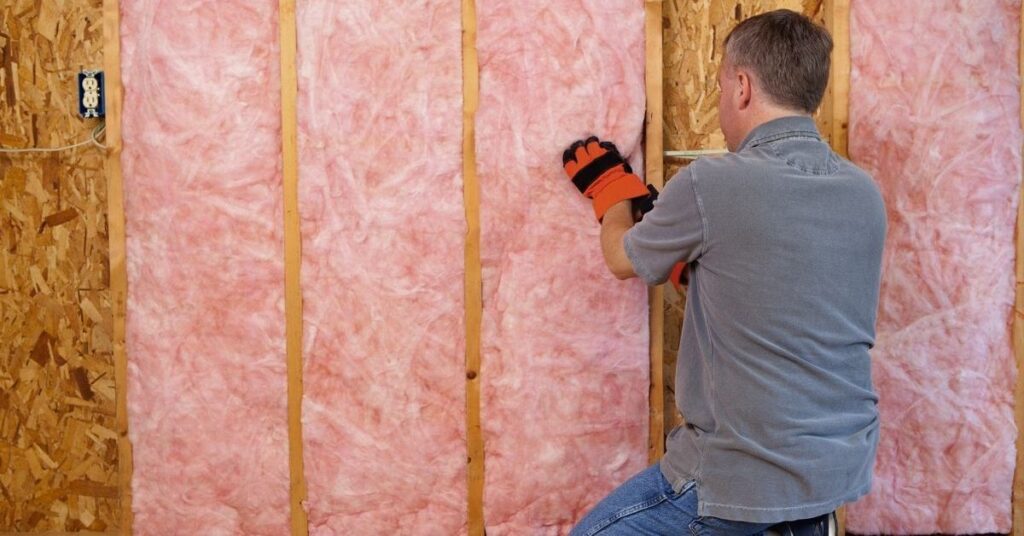Faced insulation is insulation with a facing attached to one side that acts as a vapor retarder and enhances durability and fire safety.
What Does Faced Insulation Mean?
Faced insulation is simply insulation with a facing attached to one side. This facing acts as a vapor retarder, helps control moisture, improves durability, and can even influence the insulation’s fire safety rating. Let’s dive deeper into why faced insulation exists and how it’s different from unfaced insulation.
Why Do We Need Faced Insulation?
Here’s the deal with faced insulation – it tackles several key concerns:
- Moisture Control: The facing acts as a vapor retarder, slowing down the passage of water vapor. This is super important in areas prone to humidity or condensation, as it helps prevent moisture buildup within walls and ceilings. This moisture can cause mold, mildew, and structural damage – yikes!
- Durability: Faced insulation is a bit sturdier than its unfaced counterpart. The facing helps hold the insulation together, making it less likely to sag or tear during installation.
- Fire Safety: Some types of faced insulation have a special foil facing that improves their fire resistance rating. This can be a crucial factor for meeting building codes in certain areas.
Types of Insulation Facing
You’ll find a few different types of facing on insulation:
- Kraft Paper: This is the most common type. It’s a basic paper facing that provides a decent level of moisture control.
- Foil: Foil-faced insulation offers better moisture control and can also reflect radiant heat, making it a good choice for attics and other hot areas.
- Vinyl: Vinyl facings are durable and easy to clean, making them popular for exposed insulation in basements or workshops.
Table 1: Facing Types and Their Benefits
| Facing Type | Benefits |
| Kraft Paper | Affordable, basic moisture control |
| Foil | Excellent moisture control, reflects radiant heat |
| Vinyl | Durable, easy to clean |
Faced vs. Unfaced: Which One to Choose?
So, should you always choose faced insulation? Not necessarily. Here’s a quick guide:
- Exterior Walls and Ceilings: Faced insulation is usually the way to go, especially in humid climates. The facing acts as a crucial moisture barrier.
- Attic Floors: Faced insulation is recommended to prevent moisture from the living space from rising into the attic. Make sure the facing is installed towards the living space.
- Interior Walls: Unfaced insulation is generally fine for interior walls since moisture control is less of a concern.
- Retrofitting Insulation: If you’re adding insulation on top of existing insulation, unfaced is usually the better option.
Table 2: When to Use Faced vs. Unfaced Insulation
| Location | Recommended Insulation Type |
| Exterior Walls and Ceilings | Faced |
| Attic Floors | Faced (facing towards the living space) |
| Interior Walls | Unfaced |
| Retrofitting Insulation | Unfaced |
Installing Faced Insulation
Installing faced insulation is relatively straightforward, but there are a few key things to keep in mind:
- Facing Orientation: Always install faced insulation with the facing towards the warm side of the wall or ceiling. In cold climates, this means the facing goes towards the interior of the house. In hot climates, it might face outwards.
- Stapling: Most faced insulation has stapling flanges along the edges. Secure these flanges to the framing studs or joists for a snug fit.
- Fit: Cut the insulation batts to fit tightly between the framing members. Avoid compressing the insulation, as this will reduce its effectiveness.
- Air Sealing: Even with faced insulation, it’s important to seal any gaps or cracks around the insulation using caulk or expanding foam. This prevents air leaks and improves energy efficiency.
Table 3: Installation Tips
| Tip | Details |
| Facing Orientation | Install with the facing towards the warm side of the structure |
| Stapling | Secure stapling flanges to framing members |
| Fit | Cut insulation to fit snugly, avoid compression |
| Air Sealing | Seal gaps and cracks around insulation |
Where to Buy Faced Insulation?
You can find faced insulation at most home improvement stores and lumber yards. It’s available in various materials, including:
- Fiberglass: The most common and affordable type of insulation.
- Mineral Wool: Offers excellent fire resistance and soundproofing.
- Foam Board: Rigid insulation used for walls, floors, and ceilings.
Cost Considerations
Faced insulation is generally slightly more expensive than unfaced insulation. The cost difference is usually minimal, but the benefits of moisture control and durability often make it a worthwhile investment.
Other Factors to Keep in Mind
- R-Value: The R-value measures the insulation’s ability to resist heat flow. Choose an R-value appropriate for your climate and the area you’re insulating.
- Building Codes: Check your local building codes to see if there are any specific requirements for faced insulation in your area.
- Safety: Always wear safety gear (gloves, mask, eye protection) when handling insulation.
Conclusion- What Does Faced Insulation Mean?
So, what does faced insulation mean? It means insulation with a facing that provides an extra layer of protection against moisture, improves durability, and can even enhance fire safety. Understanding the difference between faced and unfaced insulation will help you choose the right product for your home improvement projects, ensuring long-lasting comfort and energy efficiency.
